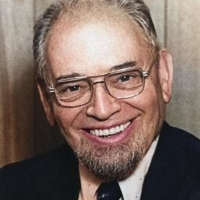You are here
Rosenblith New Investigator Award
Funding opportunities under the Walter A. Rosenblith New Investigator Award are generally posted in November or December of each year. Check for current opportunities here.
The purpose of this award is to bring new, creative investigators into active research on the health effects of air pollution. It provides three years of funding for a small project relevant to HEI’s research interests to a new investigator with outstanding promise at the Assistant Professor or equivalent level.

2023. Yoshira Ornelas Van Horne, UCLA Fielding School of Public Health, What's in the air? Engaging Native American youth in the Northern Plains to reduce air pollution
2023. Rachel Nethery, Harvard University, USA, Designing optimal policies for reducing air pollution-related health inequities
2021. Lucas Henneman, George Mason University, USA, Air pollution source impacts at fine scales for long-term regulatory accountability and environmental justice
2020. Raphael Arku, University of Massachusetts–Amherst, USA, Urban air pollution in sub-Saharan Africa: A study of prenatal exposures, birth outcomes, and lower-respiratory infections in infants
2020. Joseph Antonelli, University of Florida, USA, Robust statistical approaches to understanding the causal effect of air pollution mixtures
2020. Heresh Amini, Icahn School of Medicine at Mt. Sinai, USA, COUPH: Copenhagen Ultrafine Particles and Health
2019. Tanya Alderete, University of Colorado–Boulder, USA, Air pollutants and the gut microbiota and metabolome during early life: Implications for childhood obesity
2019. Megan Herting, University of Southern California, USA, Air pollution exposure and prefrontal connectivity in early adolescence.
2018. Manabu Shiraiwa, University of California–Irvine, USA, Formation of reactive oxygen species by organic aerosols and transition metals in epithelial lining fluid
2017. Marie Pedersen, University of Copenhagen, Denmark, Impact of exposure to air pollution on asthma; A multi-exposure assessment
2017. Joshua Apte, University of Texas–Austin, USA, Scalable multipollutant exposure assessment using routine mobile monitoring platforms
2016. Monica Guxens, Barcelona Institute for Global Health, Spain, Autism spectrum disorders, and brain imaging amongst CHildren in Europe – the APACHE project
2015. Kymberly Gowdy, East Carolina University, USA, Scavenger receptor B1 regulates oxidized lipid driven pulmonary and vascular inflammation after ozone exposure
2014. Lydia Contreras, University of Texas—Austin, USA, Understanding the impact of air quality on the changing chemistry of Regulatory Nucleic Acids
2013. Nga Lee (Sally) Ng, Georgia Institute of Technology, USA, Composition and oxidative properties of particulate matter mixtures: Effects of particle phase state, acidity, and transition metals
2012. Jason Surratt, University of North Carolina—Chapel Hill, USA, Understanding the health effects of isoprene-derived particulate matter enhanced by anthropogenic pollutants
2011. Juana Maria Delgado-Saborit, University of Birmingham, UK, England, Use of real-time sensors to assess misclassification and to identify main sources contribution to peak and chronic exposures
2011. Richard Peltier, University of Massachusetts—Amherst, USA, Development of a new method for measurement of reactive oxygen species associated with PM2.5 exposure
2010. Jun Wu, University of California—Irvine, USA, Adverse reproductive health outcomes and exposures to gaseous and particulate matter air pollution in pregnant women
2008. Thomas Barker, Georgia Institute of Technology, USA, Extracellular matrix stiffness associated with pulmonary fibrosis sensitizes alveolar epithelial cells
2008. Jiu-Chiuan Chen, University of Southern California, USA, Particulate air pollutants, risk of cognitive disorders, and neuropathology in the elderly
2007. Yifang Zhu, Texas A&M University—Kingsville, USA, Assessing children's exposure to ultrafine particles from vehicular emissions
2007. Charles Stanier, University of Iowa, USA, Development and application of a personal exposure screening model for size-resolved urban aerosols
2006. Christopher Paciorek, Harvard University, USA, Integrating monitoring and satellite data to retrospectively estimate monthly PM2.5 concentrations in the eastern United States
2006. Qunwei Zhang, University of Louisville, USA, Activation of endothelial cells and gene expression in lungs following exposure to ultrafine particles
2005. Timothy Nurkiewicz, West Virginia University, USA, Pulmonary particulate matter exposure and systemic microvascular function
2005. Jonathan Levy, Harvard University, USA, Using geographic information systems to evaluate heterogeneity in indoor and outdoor concentrations of particle constituents
2004. Michelle Bell, Yale University, USA, Assessment of the mortality effects of particulate matter characteristics
2004. Michaela Kendall, Uludag University, Turkey, Molecular adsorption at PM surfaces: a compelling PM toxicity mediation mechanism
2003. Michael Borchers, University of Cincinnati, USA, T cell subpopulations regulate airway inflammation and injury following acrolein exposures
2002. James Schauer, University of Wisconsin, USA, Source apportionment and speciation of particulate matter to support exposure and health studies
2001. Quanxin Meng, Battelle Toxicology Northwest, USA, Mutagenicity of stereochemical configurations of 1,3-butadiene epoxy metabolites in human cells
1999. Francesca Dominici, Johns Hopkins University, USA, Air pollution and daily mortality in a national sampling frame


